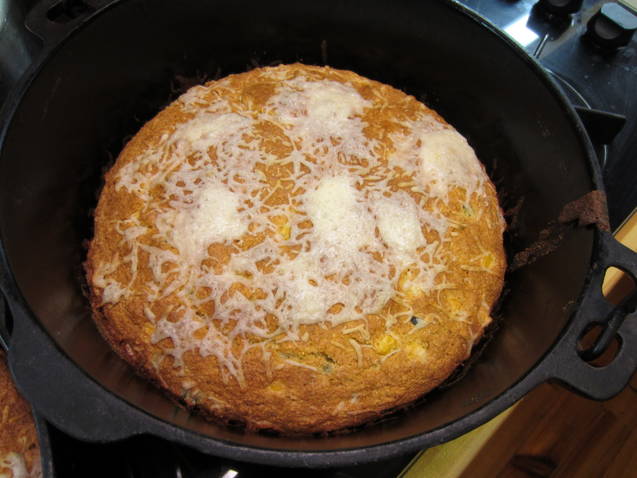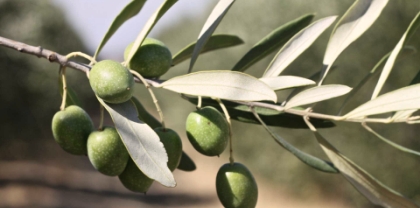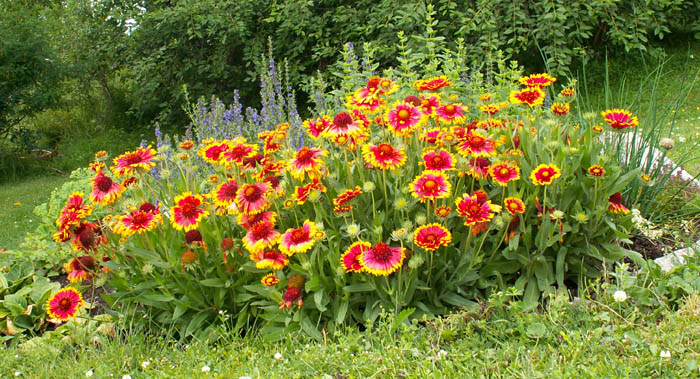Nursery Notes: HUGE 7 gallon Macho Ferns Reg. $49.99 sale
$24.99. Boston Fern and Charm Begonia Hanging Baskets Reg.
$14.99 sale $4.99! New shipments in of Fall Annuals, Agaves,
Metal Yard Art. Large selection of Antique and Knock-Out
Roses. Mission Olive Trees 5 gal. $ 39.99, 15 gal. $149.99.
Scarecrow Contest: the nursery has decided to postpone this
until next year. Thanks everyone, and please come by for a visit!
Free Lecture Sunday at 2 p.m.: How to Grow an Olive Tree in
Central Texas (Oct 14) Learn all about the wonders of these
drought tolerant beauties from master gardener Amanda Moon.
(Next Sun: Backyard rolling chicken coops, Tom Colwell.)
_____________________________________________________
Thanks to Renee Studebaker for last Sunday's fascinating lecture
on 'forever onions,' and thanks to all the gardeners who braved 'the
cold' and ended up squished cozily inside the gift shop. If you need
help getting your garden in shape, Renee is available for garden
coaching ($100 for 1-2 hours) garden maintenance ($20 per hour
Herbalist Ellen Zimmerman's Open House this Saturday (Oct 13)
from 1 - 4:30 p.m. at 8803 Bear Creek Drive. 78737 (in deep South
Austin!) A unique opportunity to visit Ellen's magical 4,000 square
_____________________________________________________
Central Texas Gardener (KLRU-TV):Tom Spencer previews the
Master Gardener tour to show how to mix edibles with flowers and
plants for wildlife. Visit two gardeners who stripped out the grass
for food, flowers, art, and outdoor living spaces. Sat. noon, 4 p.m.
Galliardia - the blanket flowers: drought tolerant and easy to grow
Wildflowers for your Backyard
By Amanda Moon
There is an oft repeated feeling that I experience every year here
in Texas. By summer I am mentally packing my bags and moving to
Colorado. I swear that I cannot take one more year here in this heat.
But then something happens. Not just any something… but Texas
in spring happens.
Specifically, our state breaks out into bloom. Then all of a sudden
I no longer feel the immediate need to relocate to somewhere cooler,
because there is nothing “cooler” than spring Texas wildflowers in
all their glory!
If you have an area in your yard that gets plenty of sun and maybe
is in need of a little pizzazz, then you can easily bring these spring
(and summer) blooming beauties to your home garden.
In smaller beds, many wildflowers can be planted from pots as re-
seeding bedding plants or perennials along side your begonias and
daffodils. For larger blank canvasses, there are great seed sources
to fulfill every wildflower lover’s wildest dream.
Bluebonnets and Indian paintbrushes are probably the first wild-
flowers that come to mind when we think Texas but some other
great wildflower choices for home gardens include pink evening
primrose, 4- nerve daisy, black foot daisy, penstemon, lantana,
mealy blue sage, coreopsis, gallardia, and purple coneflower.
Some of these plants are becoming so common in the xeric gardens
that we forget that they are actually wildflowers, still found along
many of our roadsides all over the state.
For larger areas, the sky’s the limit when planting a wildflower patch.
Just make sure that the seed mixes that you choose are formulated
for your particular soil type. Sticking with Texas sources will help
ensure your success in choosing the right seeds for your area (and
yes, that even means whether you are east or west of I-35).
Wildflower plants can be installed almost any time from fall until
spring, but the best time to set out seed is in the fall. Many wild-
flowers germinate in the fall, including bluebonnets, and so planting
this month or even earlier in September will help to ensure mature
enough plants by early spring.
Some also need a cold spell to germinate, and all will benefit from
the cooler fall temperatures and usual rainfall. The more wet stuff
we receive in the fall and winter, the more amazing the blooms in
the spring.
To set out seed, take a hard rake – or something similar – and scratch
up the soil to give the seeds a loose surface to work into. Broadcast
the seed over the area according to the seeding rates from the company
for best results (or just scatter them until you are out- which is how
it usually works at my house).
Lightly drag the rake across again to make sure the seeds are in contact
with the soil and then water a few times a week for a couple of
weeks to encourage germination. Another option is to plant just after
a good rainstorm, and let nature take its course.
One note of caution: avoid planting wildflower seeds out where any
weed and feed or pre-emergent has been put down for some time.
This will prevent your seeds from sprouting.
If you’ve been given some wildflower seed balls (golf-ball size balls
of dirt and seeds), they can be scattered out before a good rain into
any promising area and should be able to take care of themselves
from there.
Native wildflowers do not require regular irrigation, but in very dry
years, some supplemental irrigation will help keep your wildflowers
healthy enough to regenerate next season.
To keep your wildflowers coming back every year, especially the re-
seeding annuals, avoid mowing or cutting them down in the spring
until they have finished blooming and have shed their seeds.
And finally I would just like one question answered: why were my
great aunt’s bluebonnets in full bloom at the end of last month?!

A golden beauty in a black skillet: 'Me, I never have any leftovers,' writes Mick.
Mick’s Mile High Cornbread
by Mick Vann
Cornbread should always be made from scratch, and never from a
mix; using a mix is just plain wrong. Cornbread should always be
cooked in a pre-heated cast iron skillet or Dutch oven that has been
well-seasoned. When you pour in the batter, you hear the batter
sizzle in the fat, and it comes out with a perfect, deep golden-
brown crust; the cast iron also keeps it warm through the meal.
I have two iron skillets (one an antique that was found in an old
ramshackle garage and rehabilitated), and nothing but cornbread
ever gets cooked in them; they get washed with only hot water.
This recipe originated with my pal Chef Ray Tatum, but I’ve
morphed it through the decades, making it my own. There are many
additions you can make to this recipe. You can add fresh or frozen
corn, grilled corn or cream-style corn, roasted and peeled chiles or
minced fresh chiles, roasted cloves of garlic, or pork or bacon that
has been browned and diced. I usually top it with shredded cheese
about 5 to 7 minutes before it’s done, so the cheese melts onto and
into the top. It should always get split and slathered with sweet
cream butter before it’s eaten. The old folks used to love leftover
cornbread like this crumbled into a glass, topped with buttermilk,
and eaten with a spoon. Me, I never have any leftovers.
You can use all-white or all-yellow cornmeal if you like.
If you don’t have any buttermilk, you can fake it by these methods:
• Add 1 tablespoon of vinegar or lemon juice into enough whole
milk to equal 1 cup. Allow this mixture to sit for 10 minutes to give
it time to thicken before adding it to the ingredients.
• Or mix plain yogurt with whole milk. To make 1 cup buttermilk,
mix 3/4 cup yogurt with 1/4 cup whole milk.
1 cup white cornmeal
1 cup yellow cornmeal
¼ cup sugar
1 tablespoon salt
3 heaping teaspoons baking powder
1 heaping teaspoon baking soda
1/3 cup vegetable oil
1 cup buttermilk
3 jumbo eggs, lightly beaten
3 cloves minced garlic (or ½ teaspoon garlic powder)
Optional:
3 large jalapeños, minced (seeds and membranes removed for less
heat if needed)
2/3 C frozen white corn, thawed
3 to 4 green onions, minced
1 C Monterrey jack or pepper jack cheese, shredded
_____________________________________________________
Preheat oven to 425°F and place a cast iron skillet inside. In a large
mixing bowl combine all of the dry ingredients and mix well. Add
the oil, buttermilk, and eggs and incorporate, mixing just enough to
blend the ingredients. Fold in the jalapeños, corn, and scallions.
Remove the skillet and lubricate liberally with lard, bacon fat, butter,
or vegetable oil (lard will give the best flavor and a crispier crust).
Scrape the contents of the bowl into the skillet and lightly smooth the
top. Bake for 30 to 40 minutes; if the optional ingredients have not
been used it will take about 30 minutes; if they have been used, expect
40 minutes. The top should be golden brown and a skewer inserted
into the middle will come out clean. If using, the cheese should be
added just before the top of the cornbread reaches the light-golden stage.
Mick Vann: cookbook author, food writer, chef, restaurant consultant,
horticulturist gustidude.blogspot.com

Visit the website:
www.itsaboutthyme.com





 Visit the website: www.itsaboutthyme.com
Visit the website: www.itsaboutthyme.com